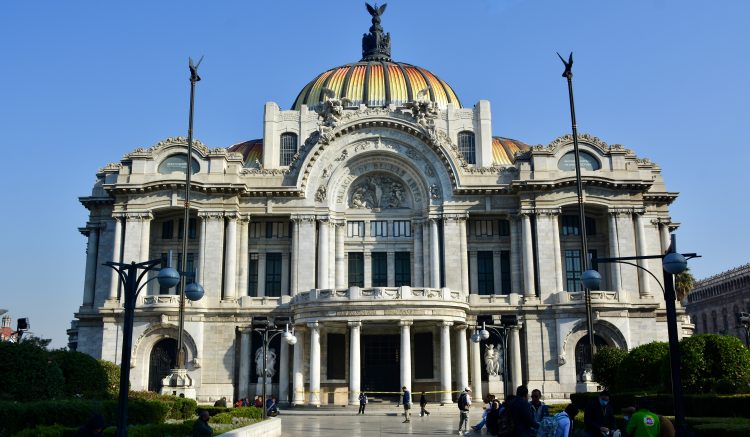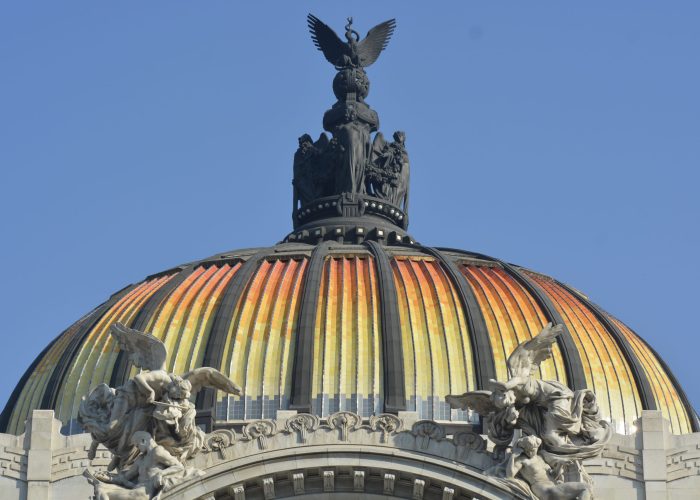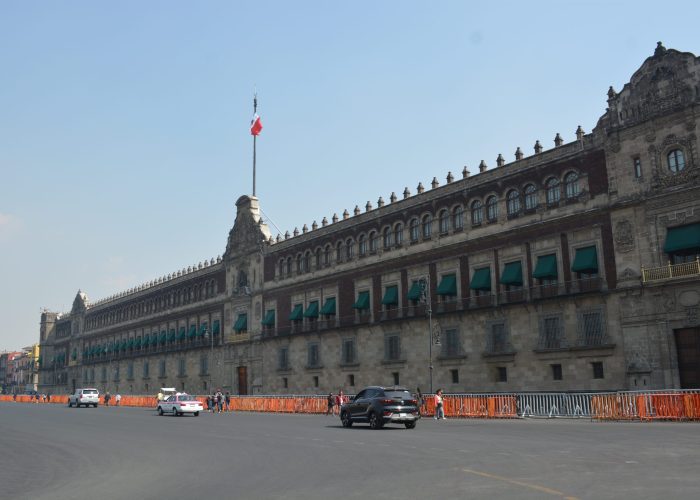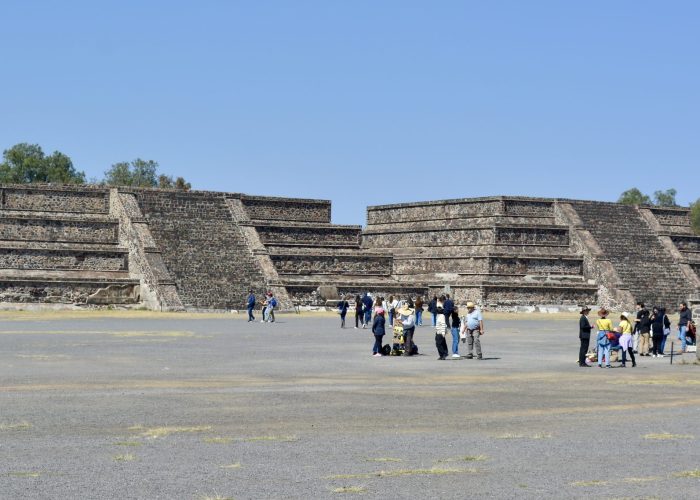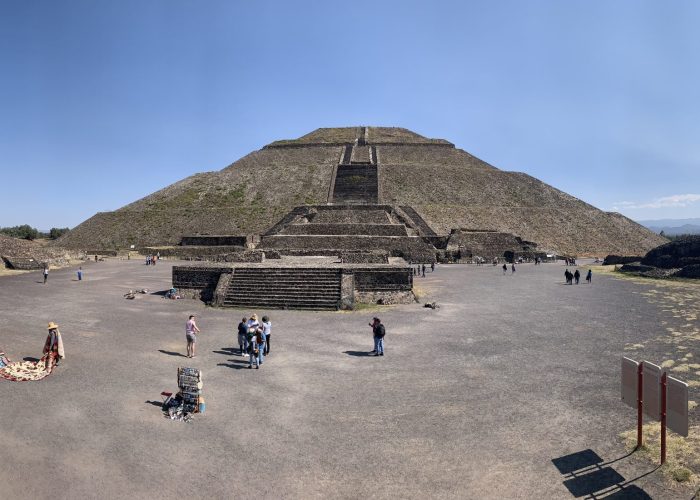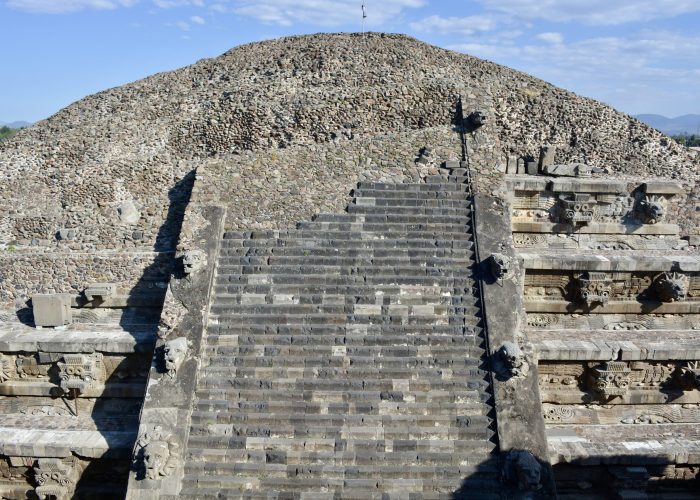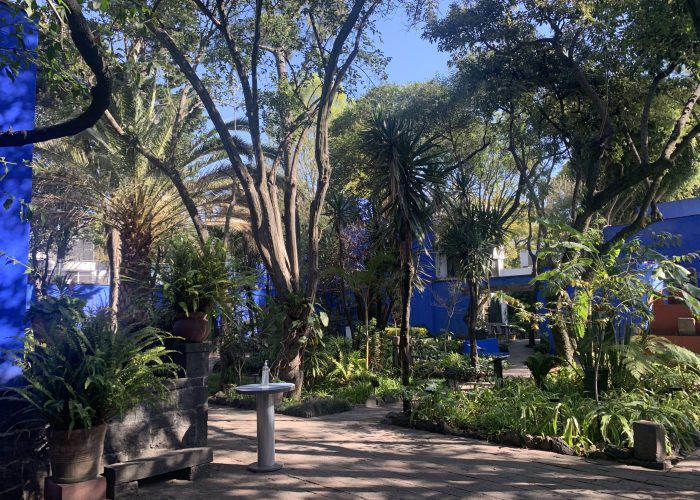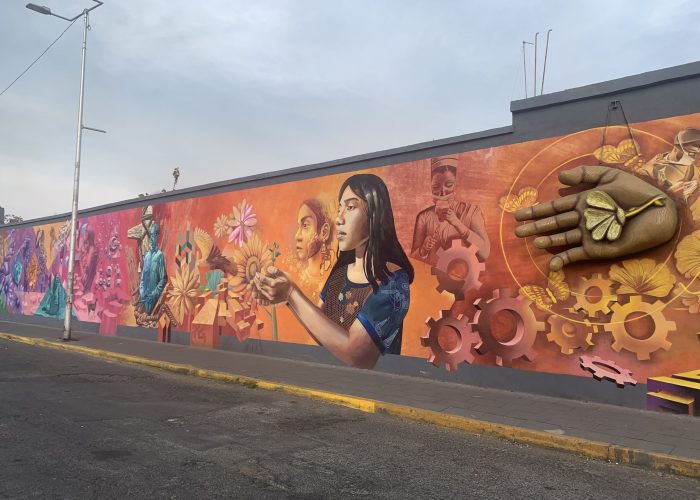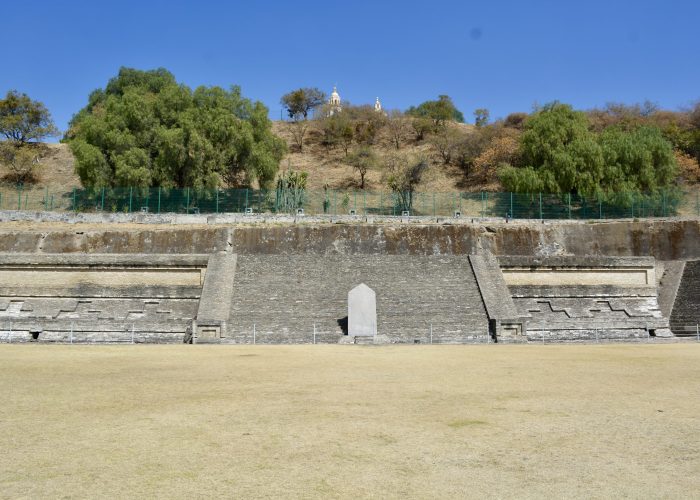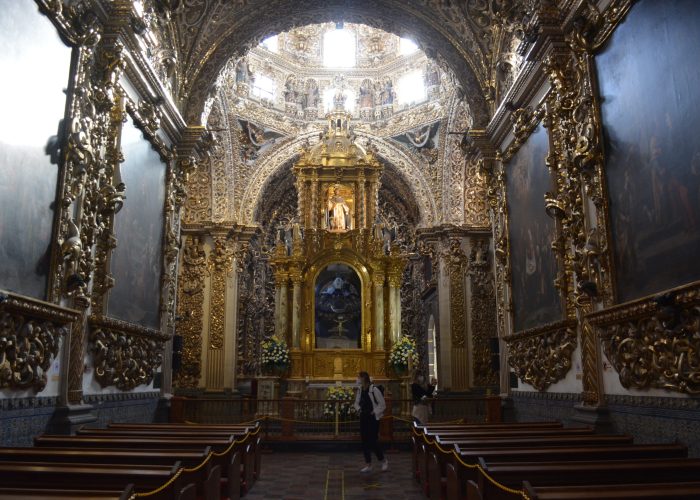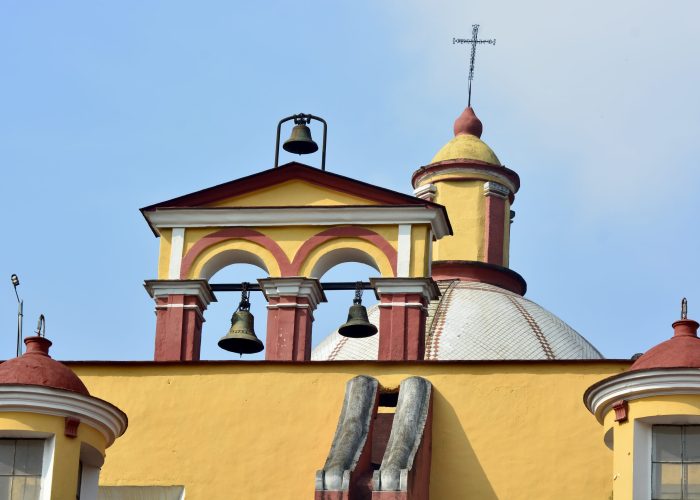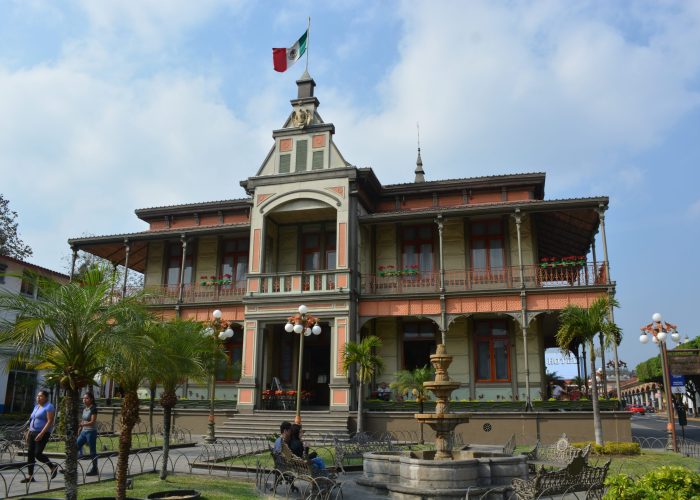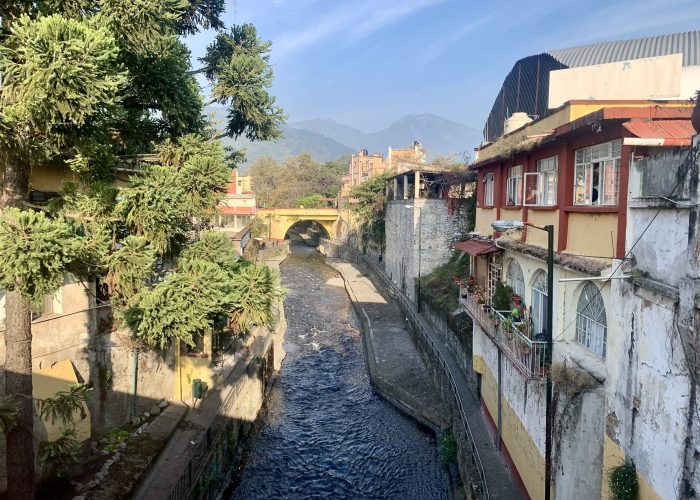We arrived in Mexico City after a long flight on the 11th January 2023 and while the airport was fairly busy we were safely through it complete with bags and a simple immigration process and into our hotel in about an hour. Mexico City sits at an altitude of 2,200 metres and in January while it is a pleasant mid 20s in the day time, the temperature falls to around 7 or 8 at night time, so is quite cool. The Mexicans typically wrap up for the cold, especially in the evenings.
COVID is still treated as a serious problem despite a relatively well run vaccination program which has covered 77% of the population according to the latest statistics. Mask wearing in indoor settings is near universally complied with, and also the vast majority of the local population wear them outside in the cities too. Apart from in medical settings, the rules are voluntary, but near universal compliance is typical of a well disciplined population.
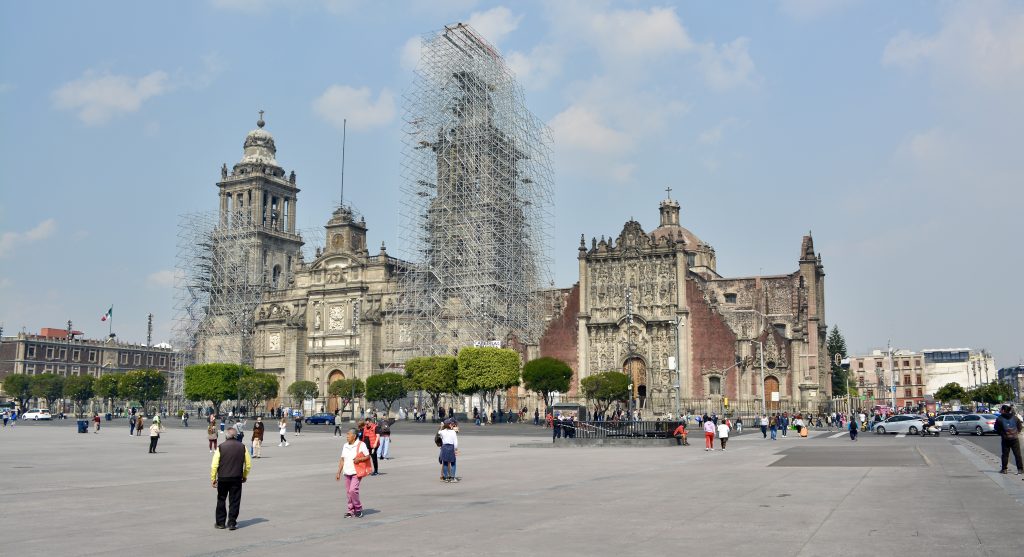
Getting around in Mexico City is very easy, and the extensive metro with its flat fare of MXN 10 is very good value. All trains have women only carriages usually at the front or back, and are clearly demarcated on the platforms by plastic barriers. There is also a lot of visible security on the metro so it felt pretty safe. Ubers are also widely used and very cheap, so as a visitor it is important to also tip the drivers. We also took the intercity bus out of Mexico City to Puebla from the modern TAPO bus station.
Credit and debit cards work extensively across Mexico, though contactless is less prevalent for foreign cards. In the cities cashless transactions are pretty much the norm.
Tourism in Mexico appears to have recovered, especially domestic tourism. Also there are many digital nomads in Mexico City, especially Americans, however as a result rents in the more fashionable areas of the city have risen beyond the means of many locals.
The first morning we followed the short City Centre walking tour in the Lonely Planet Guidebook starting in the Mercado de San Juan Ernesto Pugibet, which was next to our hotel and was just starting for the day, but like many Latin American markets was full of wonderful produces, especially the fruit and vegetables. A walking tour is always a great way to get ones bearings in a new city.
Further North is the Alameda Park a big open green space with many benches and well used by locals of all generations, exercising, walking their dogs etc. Green spaces and parks all over Mexico City are well maintained and as a consequence well used by the population. On weekends, Parque México in the La Condesa is a very popular meeting place, especially for younger generations and families. Pets are very popular in Mexico and at weekends there is an informal market to adopt cats and dogs.
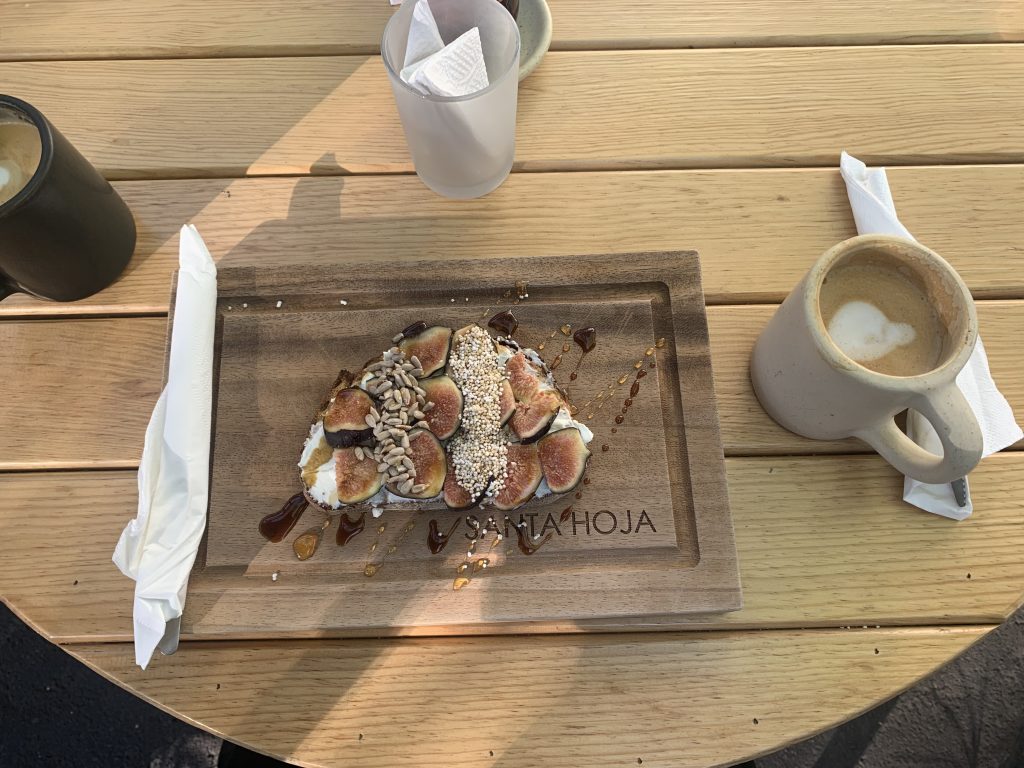
Surrounding Parque México in La Condesa and the next door barrio of Roma are many bars and restaurants that reflect a booming culinary scene, with many new innovative restaurants starting up in Roma, with more established ones in La Condesa. While you can get all sorts of traditional Mexican and international food, there are also many restaurants serving innovative modern food with a Mexican twist using local spices, fruit and other ingredients.
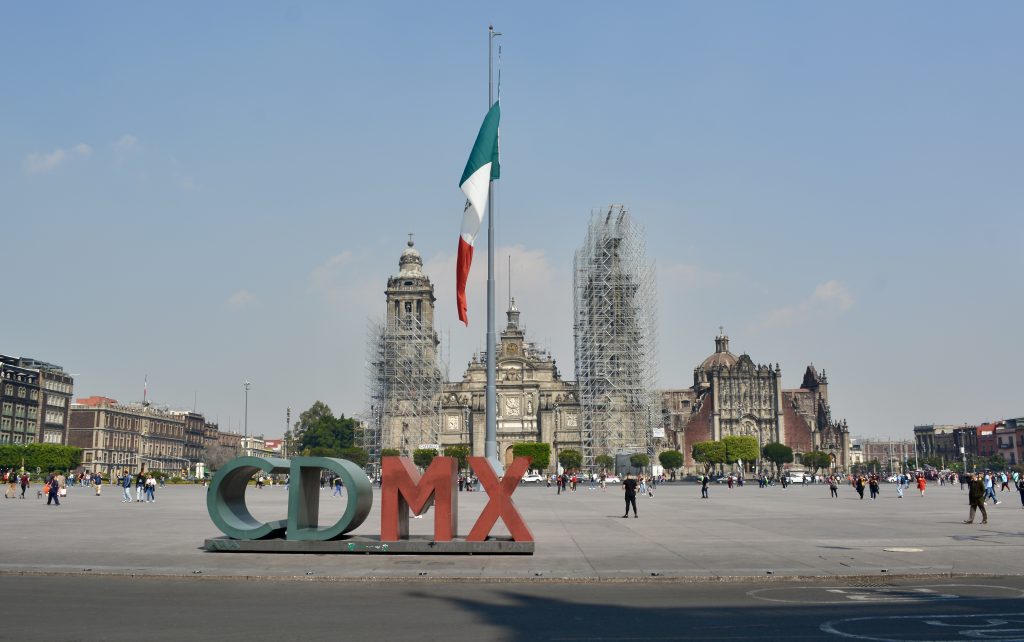
The city centre, the large main square at Zócalo and the surrounding streets have many fine buildings especially from the last 200 years. Some are sinking as the ground is unstable and a lot of work is being carried out to stabilise the structures. The main Zócalo square is one of the largest urban squares in the world and on its sides sit the traditional buildings of government and religion. It is a good place to absorb the character of the city and is large enough so as not to get too crowded.
The main cathedral covers one full side of the square and is one of the largest catholic cathedrals in the world. At the time of our visit it was undergoing some repairs to the towers and inside it was possible to walk around most of it apart from the massive choir and organ. Churches in Mexico City were pretty much open all the time and also free to enter, which typically has not been the case in some other Latin American countries.
On one other side of the square is the extensive presidential palace, with various government ministries and other offical buildings on the other two. The architecture all neatly compliments each other. Just to the North the square are the ruins of the Temple Mayor de México – Tenochitlan, what is left from the old Aztec temple following the Spanish conquest.
The main pedestrianised road Avenida Francesco I Madero links the Zócalo to Alameda Park. There are many specialist shops on the road as well as a number of important churches. The Templo de San Francisco being probably the most impressive, as typically of the San Franciscans their churches are full of gold and other valuable artefacts.
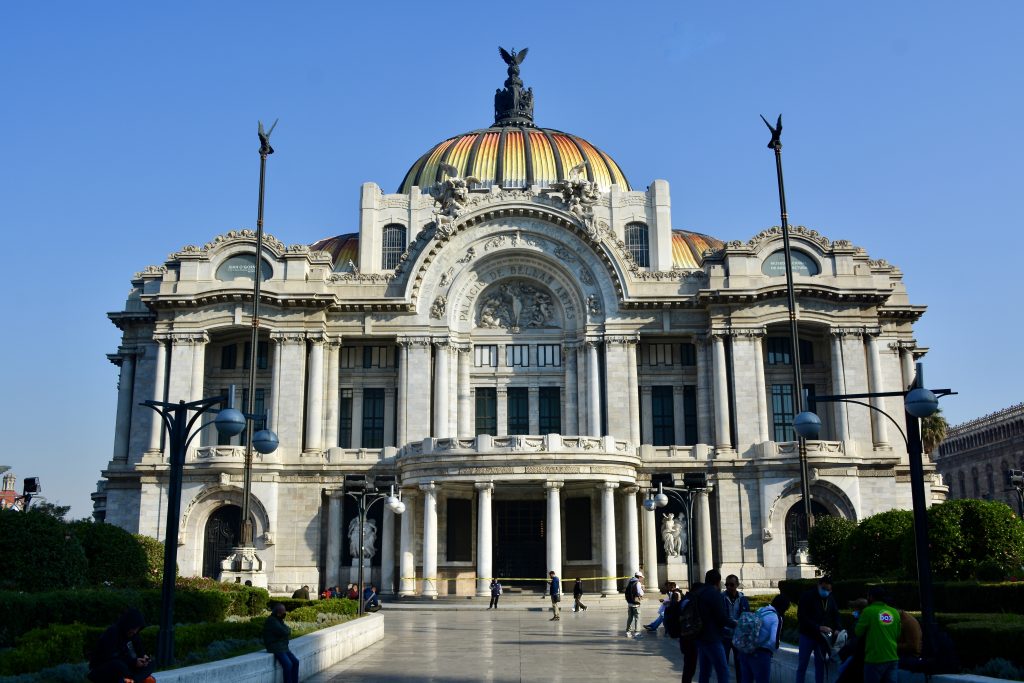
Probably Mexico City’s most impressive building sits at the beginning of Alameda Park, the Palacio de Bellas Artes, a wonderful Art Deco construction with a green and orange tilled roof. It is well worth paying the small fee to see the internal Art Deco marble and other carvings together with some of the most impressive mural paintings largely painted in the 1930s. The mural by Diego Rivera that depicts the struggle through the recessions of the 1920s and 30s together with the challenges of new political ideologies and especially fascism is particularly thought provoking and is also very much relevant to today.
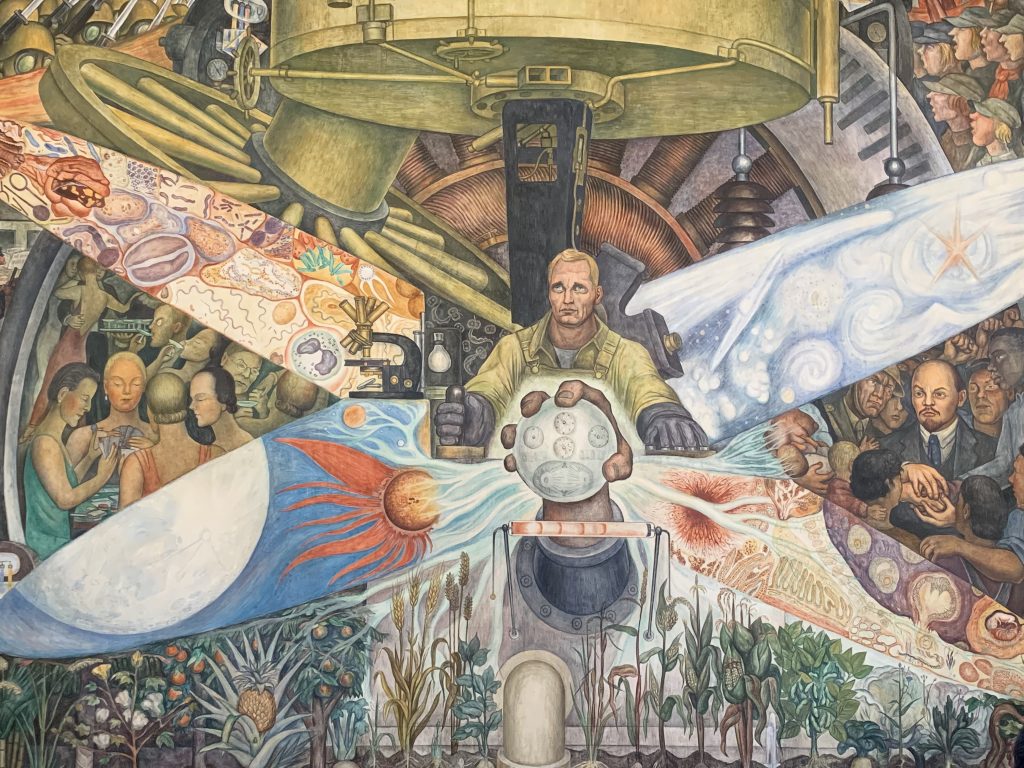
Next to the Palacio de Bellas Artes is the National Bank of Mexico and the main Post Office. The latter being famous for its interior being used in the James Bond film Spectre and also a number of other films.
The Museo Nacional de Antropología, is a must visit museum. To covers the full range of the original cultures and inhabitants of México before the Spanish came. The museum is vast and can feel overwhelming, so if you are only able to make one visit, it is important to plan your trip and concentrate in detail on one off the cultures, while covering more briefly the others. The rooms covering Teotihuacán make an excellent compliment to a visit to the Teotihuacán site just outside of Mexico City.
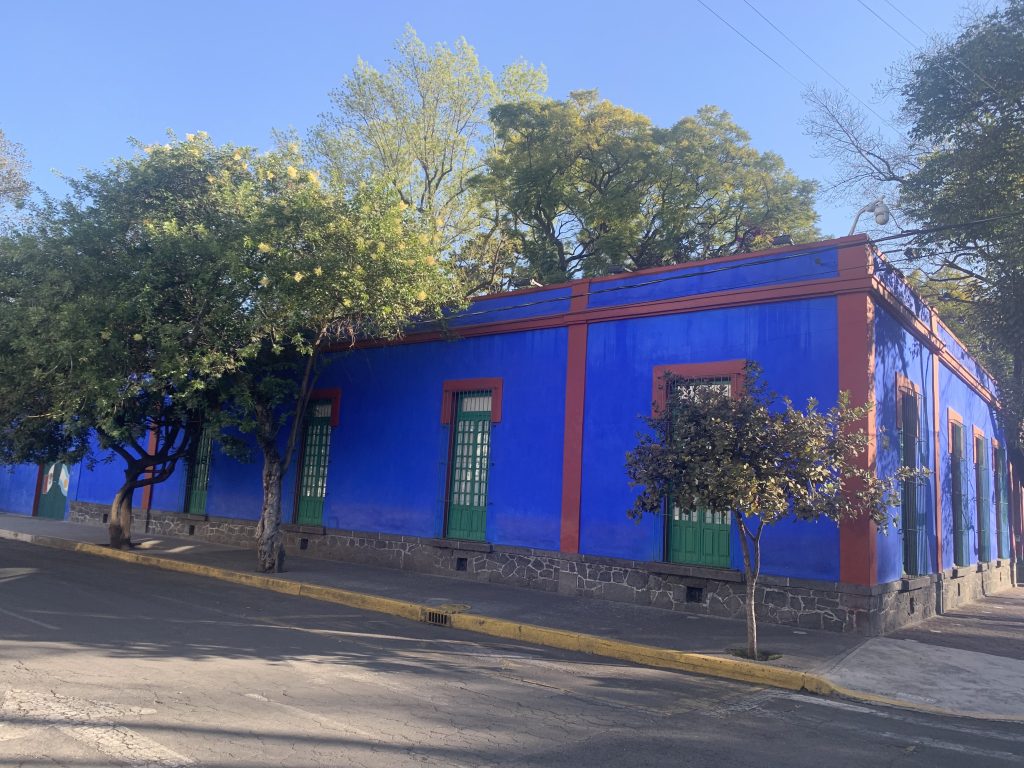
Another interesting museum to visit is Frida Khalo’s House in the south of the city. The house itself is fascination and represents a time travel back to the 1920/30s. The story of her life and also disability following her car accident is also fascinating. To visit the house you have to buy tickets in advance, simple enough on the internet, and choose your time slot. It is not possible to visit with out buying tickets in advance.

The pre conquest site of Teotihuacán is probably the most important day trip to do from Mexico City. We chose to go with Wayak Tours, which also took in the shrine at Guadalupe and the pre colonial site at Tlateloco. Our guide Marcos was excellent and provided copious amount of information on Teotihuacán culture, the subsequent Aztecs and the impact of the Spanish colonialists. The only criticism was the amount of time wasted in the shop before visiting the archaeological site.
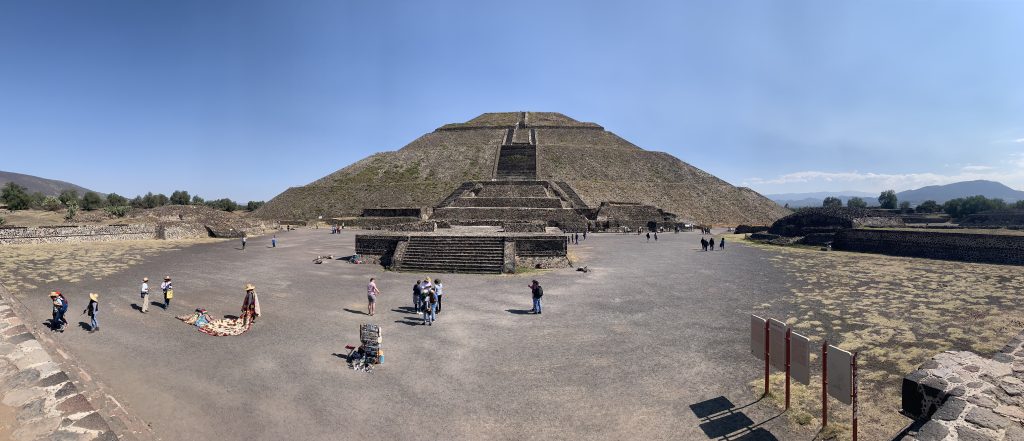
Teotihuacán is an enormous complex with two principal pyramids, the pyramids of the sun and moon. There is also a lot of formal ceremonial space around the pyramids and a massive long road through the middle of the site. The space really emphasises the grandeur of the complex and its spirituality. Today visitors cannot climb the pyramids.
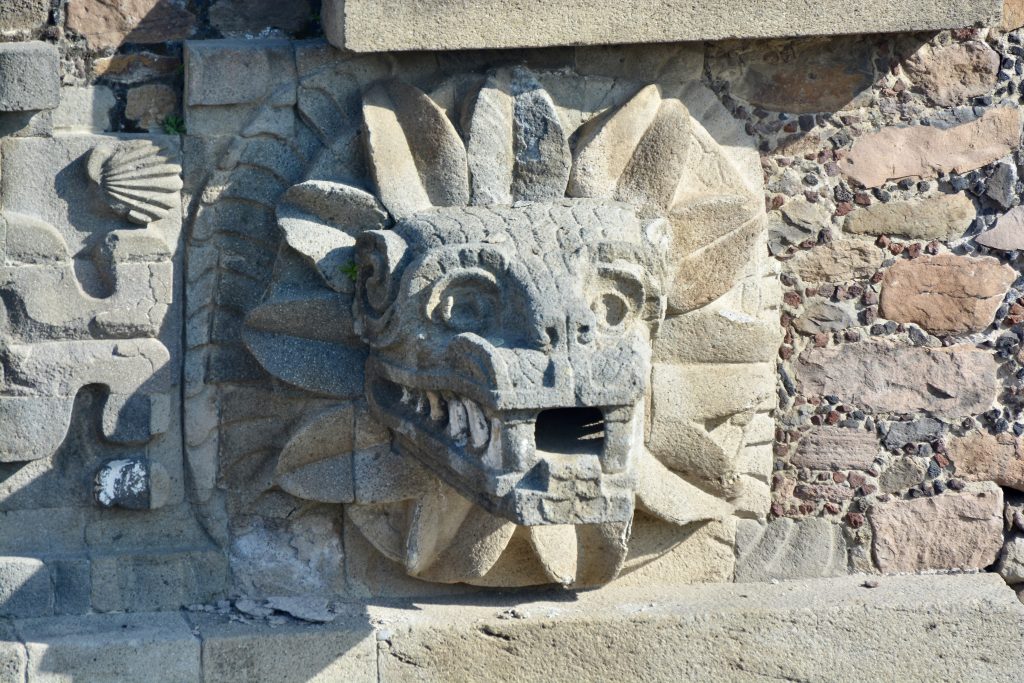
Further down the site is the Pyramid of Quetzalcoatl, which has been reconstructed so it can be climbed. The pyramid also contains many carvings and sculptures so gives an impression of what the original decorations were like. There is also a reconstruction of elements of this pyramid in the Museo Nacional de Antropología in Mexico City, which is also in part painted.
A couple hours away from Mexico City is the UNESCO city of Puebla. There are frequent buses from the TAPO Bus Station and the journey is quick and easy. Puebla is worth visiting for a couple of days and everything is fairly compact. The Main cathedral is one of the largest in all of Mexico and dominates one side of the main central square the Zócalo.
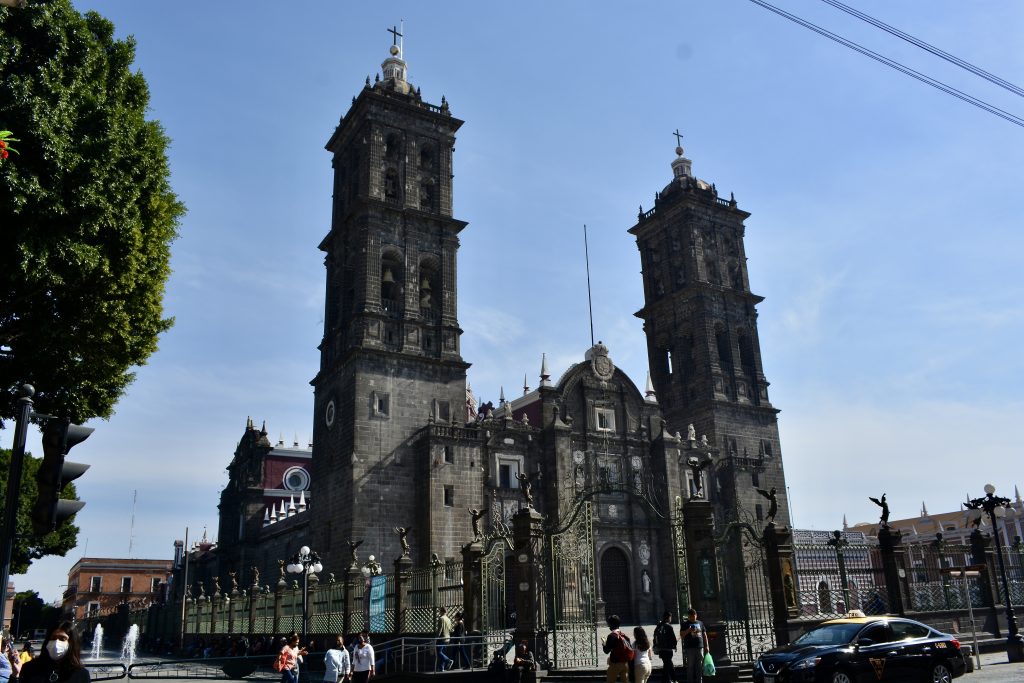
The Zócalo is very busy and like most of Puebla is kept spotlessly clean. On its other three sides are a variety of restaurants and shops. To the south of the Zócalo is a very attractive number of colourful colonial streets around the Pazuela de los Sapos, with bars and antique shops. Nearby is also a lively artisans market selling lots of blue Puebla pottery.
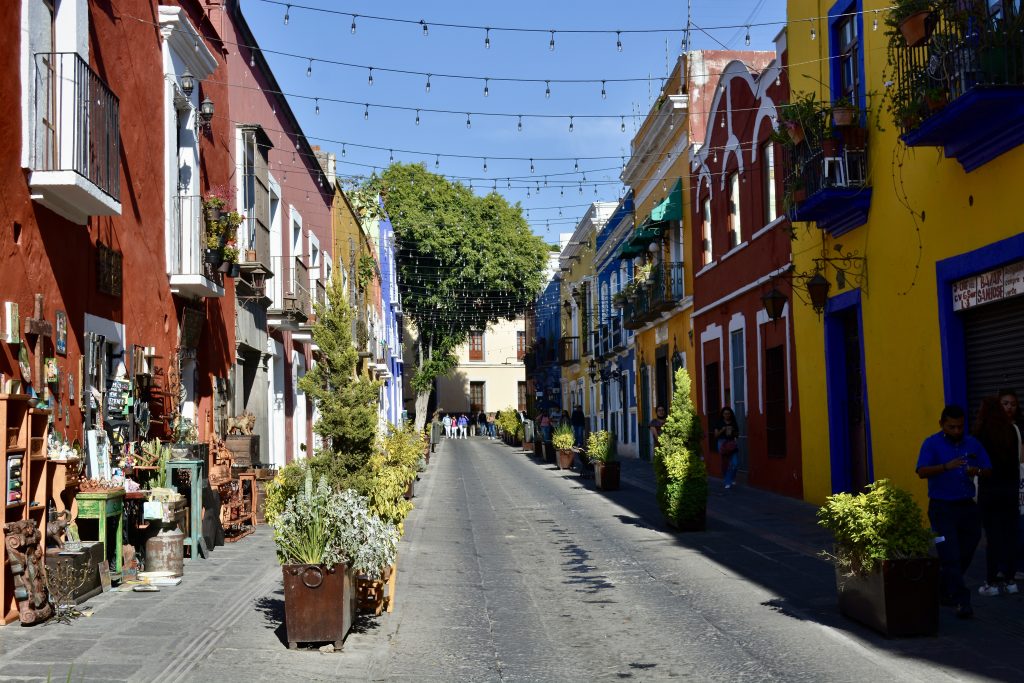
If there is time to visit only one church other then the cathedral, then it should be the Templo de Santo Domingo, which outdoes the San Franciscans in the amount of art and wealth. The carvings in the Chapel of Rosario are particularly ornate and impressive.
Near to Puebla is Cholula, which can be easily reached by public bus for MXN 10. There used to be a modern tourist train linking the two towns, but currently that is not running and staff in the Tourist Office expressed scepticism that it would be reopening soon. Cholula is famous for having one of the largest pyramids in the world, claims to be bigger than the ones in Egypt. The pyramid today is covered in vegetation and a large Catholic Church on top, the Santuario de la Virgen de los Remedios. A classic case of the colonists imposing their religion and culture on the local population.
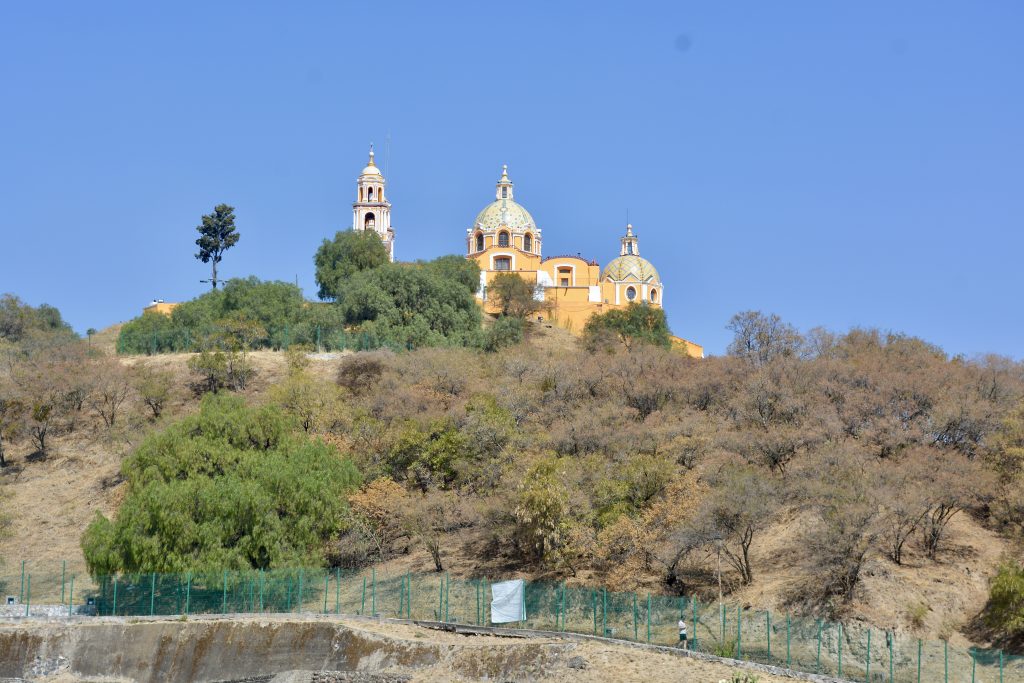
Both the pyramid and the church are well worth visiting, and there are some great views from the top. There is also a nearby museum, which though rather old fashioned, contains some interesting pottery and is included in the admission price. It also tells the story of Cortes double crossing and then slaughtering the local population in one of the biggest acts of violence in the Spanish conquest of Mexico.
A couple of hours further South is the laid back small city of Orizaba, inside Veracruz state. Orizaba has a neat colonial centre with a number of colourful churches and a pleasant Zócalo with saying what a great city it is. The city sits in a valley next to Mexico’s highest mountain, Pico de Orizaba, and has made a feature of the mountain river that passes through the city. For several kilometres by the river are a number paddocks containing rescued animals, including jaguars, bears etc. These animals have been so influenced by their time in captivity that they can not be released back in the wild.

There is a cable car up to a view point over the city and the surrounding mountains which is worth a visit. The views are good, but in common with most of central Mexico traffic and other pollution does provide a haze that means that the views are not as clear as they could be.
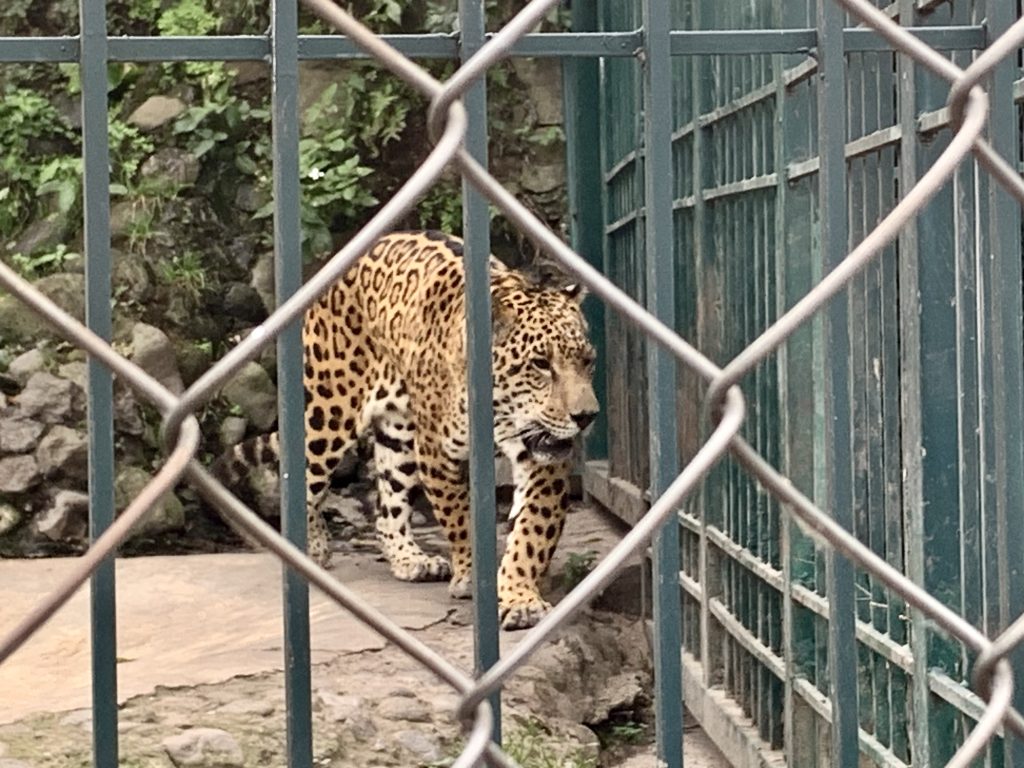
Dates: 11th January 2023 to 22nd January 2023
